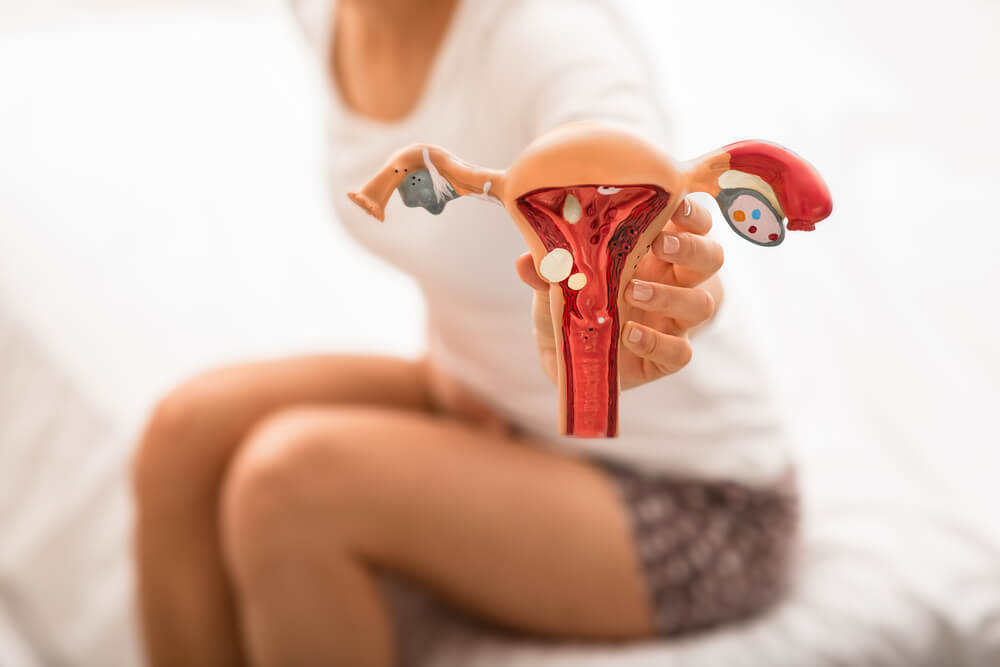If you are experiencing vaginal bleeding, vomiting, weakness, or nausea, you may be dealing with a ruptured ovarian cyst. But how serious is this condition, and does it require immediate medical assistance? What are some of the ruptured ovarian cyst symptoms to look out for? Learn about the signs and symptoms of this common condition, who are most likely affected, the diagnosis and the treatment process, and much more. You will also uncover whether there is a way to prevent ovarian cysts in the first place.
Here’s a helpful tip to get started. Make sure you visit your OB-GYN regularly. Although a ruptured ovarian cyst typically goes away on its own, in some cases, you may require surgery. If you are looking for the best professionals, consider surgical procedures in Palm Beach, FL.
What is a ruptured ovarian cyst, and how serious is it? What are some of the common signs and symptoms associated with this condition? How do you know you’re dealing with an ovarian cyst burst in the first place? Keep scrolling to find out.
Cyst on the Ovary: What is It?

When a woman is ovulating, follicles (structures that are like cysts) produce the hormones progesterone and estrogen. Although the structures do not carry any health risks, they can cause pain and discomfort. Typically, ovarian cysts disappear during a woman’s menstrual cycle. When an ovulation cyst does not go away on its own, it is referred to as a “functional cyst.” When this cyst does not release an egg and grows in size, it is a follicular cyst. Whereas, when the cyst releases an egg but grows in size, it is a corpus luteum. All of these cyst types are usually harmless, and they disappear without requiring medical assistance. Usually, the cysts go away on their own in up to three menstrual periods.
Overall, there are four cyst types:
- Teratoma or dermoid: These cysts contain tissues such as skin, teeth, bone, and hair, and they are present at your birth. They are relatively uncommon and affect around 10 out of 100,000 female patients.
- Functional cysts: In other words, these are ovulatory cysts. This type is prevalent, and it is typically not accompanied by symptoms. They can develop into corpus luteum cysts or follicular cysts.
- Endometrioma: These cysts are filled with blood and grow on the tissue outside your uterus.
- Cystadenoma: These are cysts that develop on your ovaries’ surface. Usually, they are either filled with ovary tissue or fluid.
Consulting with a healthcare professional for regular OB-GYN appointments is crucial for optimal health and well-being. If you still do not have a medical professional you can trust, reach out to the Comprehensive OBGYN team for expert help and guidance.
Cyst on the Ovary: Risk Factors
The majority of ovarian cysts are a regular part of the menstrual cycle. Usually, they are noncancerous and benign. However, some ovarian cyst types, like endometriomas, are abnormal. The exact reason for a ruptured cyst remains a mystery. Here are some potential risk factors:
- Cysts larger in size burst easily.
- Cysts may rupture following strenuous exercise or post-sexual intercourse.
- Women with a history of the condition are more likely to experience a ruptured cyst.
Again, speak to a medical professional and get regular gynecological exams. By doing this, you will be aware of any ovarian cysts you may hay and the possible risk factors.
Several factors lead to a cyst on the ovary. You may be at higher risk of having ovarian cysts if you:
- Are expecting a baby.
- Have hormonal issues.
- Use clomiphene, a fertility drug.
- Have endometriosis.
- Have a history of ovarian cysts.
- Are experiencing a severe pelvic infection.
Common Ruptured Ovarian Cyst Symptoms
There are several signs and symptoms you should be aware of when it comes to an ovarian cyst burst. This condition can cause sharp and sudden pain in the pelvic area, usually on your lower right side. However, some cyst types, like endometriomas, cause pain on either side of your pelvis.
In some cases, patients experience pain after having sex. On the other hand, some patients with an ovarian cyst burst report pain when they are performing physical exercise. According to the experts, the sharp pain is likely to start at the midpoint of a woman’s period.
With all of this in mind, different cyst types will cause various ruptured ovarian cyst symptoms. Here are some of the most common symptoms to look out for:
- Feeling faint
- Boosted pain while sitting
- Nausea
- Vaginal bleeding
- Vomiting
- Pain or tenderness in the abdominal or pelvic area
- Fever
- Heavy or full feeling in the pelvis
- Shoulder pain (accompanied by bleeding)
In most cases, an ovarian cyst burst is harmless and does not require added medical assistance. However, some of the burst symptoms can cause tremendous pain and discomfort. Hence, depending on your ruptured ovarian cyst symptoms, you may need help from a professional.
Most patients will receive usual treatment with pain medication and observation (if required). In more severe cases, patients with a ruptured cyst may need to be admitted to the hospital for further observation.
While in the hospital, the medical professionals might want to:
- Check the vital signs and the blood cell to total blood volume ratio (or hematocrit).
- Administer repeated tests and scans to check for hemoperitoneum or internal bleeding into the space between the internal organs and the abdominal wall.
If you suspect you are dealing with a ruptured cyst, talk to a medical professional. Although most symptoms of a burst are benign, they could potentially be serious. If you are experiencing any pain, discomfort, or other related concerning signs, get expert help immediately.
Ruptured Ovarian Cyst Diagnosis
How do you know you have a cyst on the ovary? What are some ways your doctor will diagnose you?
If you are experiencing any signs and symptoms of this condition, turn to a healthcare professional. Firstly, your doctor will ask about the characters and your medical history. Your doctor will analyze your symptoms and check for any other underlying medical conditions.
You may also need to undergo a physical and a pelvic exam.
If the medical professional believes you have a cyst on the ovary that is ruptured, you may have to undergo added tests. The professional will want to rule out conditions like kidney stones, appendicitis, or ectopic pregnancy. Some of these tests could include:
- A pregnancy test: Cysts can be caused by pregnancy. If the patient is pregnant, the doctor will choose a minimally invasive treatment to keep the baby safe.
- Ultrasound: The doctor will analyze the location and size of the cyst.
- Urine test: The doctor will look for protein in the urine and other potential causes of the pain.
- Vaginal culture: This test helps diagnose or rule out pelvic infections.
- CT scan: The doctor will take a detailed picture of the pelvis using X-rays.
Ruptured Ovarian Cyst Treatment

Once diagnosed, you may require treatment. Remember, in most cases, treatment is unnecessary, and the cysts go away independently. Rarely, patients may need to undergo laparoscopic surgery to stop any bleeding. Moreover, patients experiencing persistent pain may require surgery. The same is true for cysts that are larger than five centimeters.
If you ignore your symptoms and do not seek out medical assistance, you may have to deal with the following complications:
- Excessive blood loss due to a bleeding cyst.
- Excessive bleeding due to a ruptured endometrioma.
- Spreading of infection could lead to perineum inflammation or peritonitis (this could be potentially dangerous).
- Ovary loss due to ovarian torsion.
Give us a call today and schedule your first appointment. Reach out to our team for expert evaluation and medical assistance.


